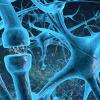There are basically 2 camps on this:
- Telomeres are a protective recursion-limiting mechanism and no cell needs to replicate more than 60x (at least not if you want to live ~100 years). Lengthening them will not increase lifespan, and probably causes cancer. Lots of very intelligent people who have PhDs think this, and have violently argued with me that I'm foolish for believing #2. They'll think taking cycloastragenol causes cancer, etc.
- Telomeres are that, and also effect changes in lifespan via gene expression. Lots of very intelligent people also think this.
See http://genesdev.cshl...4.full.pdf html
"Length-regulated long-range (megabases) telomere chromatin conformation changes may alter gene expression to optimize fitness in longlived species such as humans and may profoundly affect human physiology, aging, life span, and disease."
"Telomere shortening causes a change of chromatin organization."
"We show here that telomere length influences the formation of chromatin loops at a distance of up to 10 Mb from the chromosome ends. We identified 15 endogenous genes regulated by telomere length in fibroblasts and myoblasts. We named this phenomenon TPE-OLD in reference to the previously described classic TPEs."
The question is what happens when you "undo" the shortening. At least in some cases, the expression will change back:
"To determine the nature of the relationship between telomere length and TPE-OLD gene expression, we reintroduced hTERT (Fig. 6). Telomerase activity reversed the expression of TPE-OLD genes [emphasis mine], a finding that corroborates observations made in a recent study of senescent-related gene expression (Lackner et al. 2014)."
Research from K Cao on progeria also supports this thesis based on her studies on progeria:
See http://www.ncbi.nlm....pubmed/21670498
Basically, progeria may be a disorder where the gene expression that is normally regulated by the telomere length to express more and more often as a death-encouraging alternative splice gets turned on chronically and way too early. She focuses on the alternative splice that yields lots of progerin, which — yep, modifies the chromatin and gene expression. In turn, it creates a vicious cycle that tears down the telomeres even faster. She also observes this on the way:
"Progressive telomere damage was also found to lead to extensive changes in alternative splicing in multiple other genes. Interestingly, elevated progerin production was not seen during cellular senescence that does not entail telomere shortening."
And somewhat paralleling this, the previous paper states:
Our results demonstrate that the expression of a subset of subtelomeric genes is dependent on the length of telomeres and that widespread changes in gene expression are induced by telomere shortening long before telomeres become rate-limiting for division or before short telomeres initiate DNA damage signaling. These changes include upregulation and down-regulation of gene expression levels.
As usual, disclaimer applies RE: armchair. I'm a computer scientist, not a biologist. But it's pretty clear if these studies aren't fabrications that telomeres do effect changes in gene expression and chromatin.
Progerin is not the aging mechanism. It's probably just one. Telomeres may also be just one, but they appear to be upstream of a bunch of them. Telomeres flip on lots of alternative splicings that all effect changes in chromatin as function of length. Progerin is one of the (terrible) results of altering chromatin expression. And it seems to be very related to all the stuff that ages quickly in progeria sufferers:
http://www.ncbi.nlm....3819/figure/F7/
... but note that progeria sufferers are cognitively totally normal. They're smart little kids that look old. They just look old, though. They will typically die of coronary artery disease or a stroke, but before that they're totally functional kids that look like little old people. This can't possibly be the only regulator of age, which also yields terrible things like increasing amounts of mitochondrial and ER destruction. Anyway, if you look at that list of genes, it's all cytoskeleton related, which is probably unbelievably interesting.
So it's all plausible. They observe various "effect[s] of telomere shortening on histone modifications."
It's just less clear whether the chromatin and epigenetic changes in general regress when you make telomeres longer again after they were previously shorter. The progerin is there now. A feedback loop makes sure it also tears down your telomeres more quickly possibly even after you lengthen them again. Taking methylene blue will make progerin soluble and help remove it from the nucleus according to another Cao paper, but how many other things like progerin are in there?
Edited by Logjam, 24 April 2016 - 05:30 AM.





























































